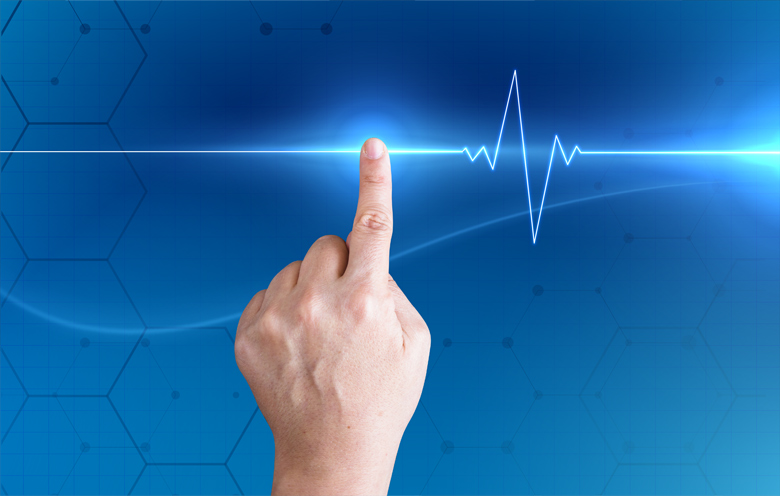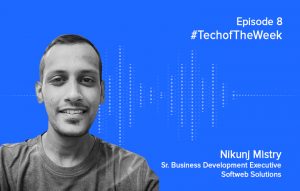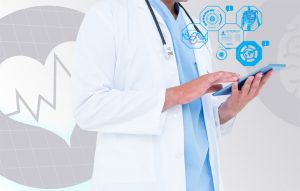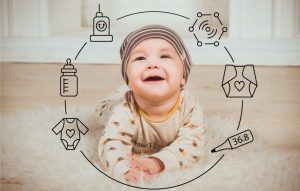The Internet of Things (IoT) has already gained momentum in the healthcare industry. From wellness sensors, personal fitness to surgical robots, IoT has introduced innovative new tools and efficiencies in the hospital infrastructure leading to more integrated healthcare. Also, IoT has created various possibilities in medical care as IoT-enabled connected medical devices gather invaluable data that give additional insights into early symptoms, remote patient care, and provide controlled treatment.
“The Internet of Medical Things, or IoMT, the market will exceed $136.8 billion by 2021.” – Marketwatch
A lot of healthcare organizations have already adopted IoT-based solutions to increase access to care, improve the quality of care and most essentially reduce the expense of care. Let’s discuss a few advanced IoT applications that demonstrate the kind of potential IoT has and how it is already playing out.
Some real-life connected healthcare examples that have brought revolution in the healthcare sector
Measure medication adherence with ingestible sensors
A lot of patients do not take medicines as directed, hence it causes a delay in cure and the repercussions can be severe. Proteus Digital Health created smart medicine containing ingestible sensors that monitor patients’ adherence to medicines. The company created pills that once consumed by a patient would dissolve in their stomach and activate the sensor to produce signals and gather data.
The collected data gets transmitted to a smart app, which shows whether the patient has taken the medication as directed or not. With the use of this technology, doctors can have more informed communication with their patients regarding treatment.
Monitor depression with Apple Watch app
Just like many other cognitive illnesses, clinical depression isn’t a steady state of mind. It is a variable condition with patterns and symptoms that keep changing over time and even within a day. Takeda Pharmaceuticals collaborated with Cognition Kit to do a study on cognitive health and measure it. In this study, they would continuously monitor and assess patients’ depressive disorder.
Mobile apps, as well as wearables technology, assesses the effects of depression in real-time. Here, the Apple Watch app provides healthcare professionals and patients with valuable insights to drive informed conversation and better treatment.
Control diabetes with smart CGM
Diabetes is a chronic disease, and therefore the patient suffering from it needs better control over their blood glucose levels. The diabetes patients need to continuously monitor their blood glucose levels and take readings at regular intervals, several times a day.
Smart continuous glucose monitor (CGM) devices such as Freestyle Libre transmit blood glucose levels data to a smartphone or smartwatch allowing the patient to easily check the details about their disease and detect symptoms. Apart from that, this smart device can interact with a smartphone that can store data for long-term enabling diabetes patients to calculate their insulin dose, record their meals and blood sugar levels from time to time.
Control asthma with connected inhalers
“The digital respiratory health market primed for growth could reach $557M by 2023.” – MobiHealthNews
Asthma is a chronic disease just as diabetes that impacts the lives of millions of people across the globe. With IoT-enabled connected inhalers, doctors and patients can have increased insights and better control over the asthma symptoms as well as treatment.
Propeller health created a smart inhaler in which the sensor is attached to the inhaler that helps patients with asthma and COPD to identify symptoms. It also helps to keep track of medication and provides forecasts for allergens. This connected inhaler generates meticulous reports which patients can share with their doctor and get better treatment.
Optimizing ER wait times with the IoT-based AutoBed system
Many hospitals face a critical challenge of a long wait for the emergency room. Mt. Sinai Medical Center collaborated with GE Healthcare and created AutoBed – IoT-driven software to reduce patient wait times in hospitals. The AutoBed system generally tracks the availability of beds with respect to incoming patients. This makes it easier for the hospital to allot beds and know which patient requires a bed more urgently.
With the help of this IoT-enabled software, it is easier to track several important metrics to match the right patient with the right bed. It’s a revolutionary application that facilitates hospitals in seamlessly managing bed allotment saving a lot of time as well as resources.
The final say
These are just a few examples of IoT in healthcare; in fact, this industry has adopted IoT technology to a much greater extent. With IoT, healthcare organizations are paving new paths for further innovation and increasing efficiency in medical care and treatment. Even though there are some big challenges along the way, the current pace of innovation is undeniably finding actionable solutions. To know more about the scope of IoT in healthcare, talk to our experts.









